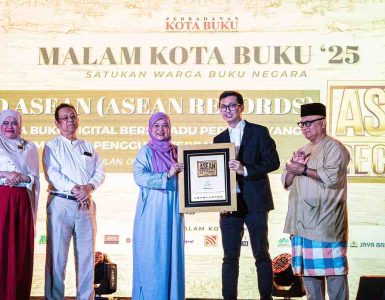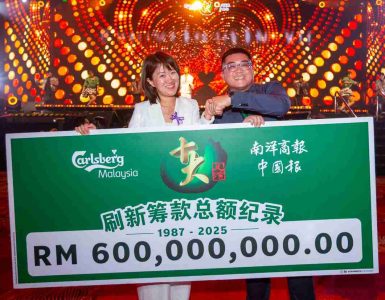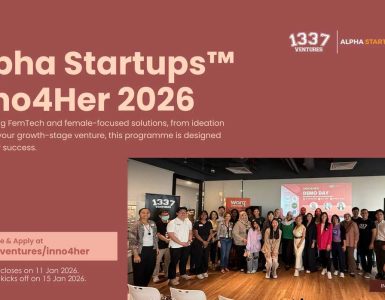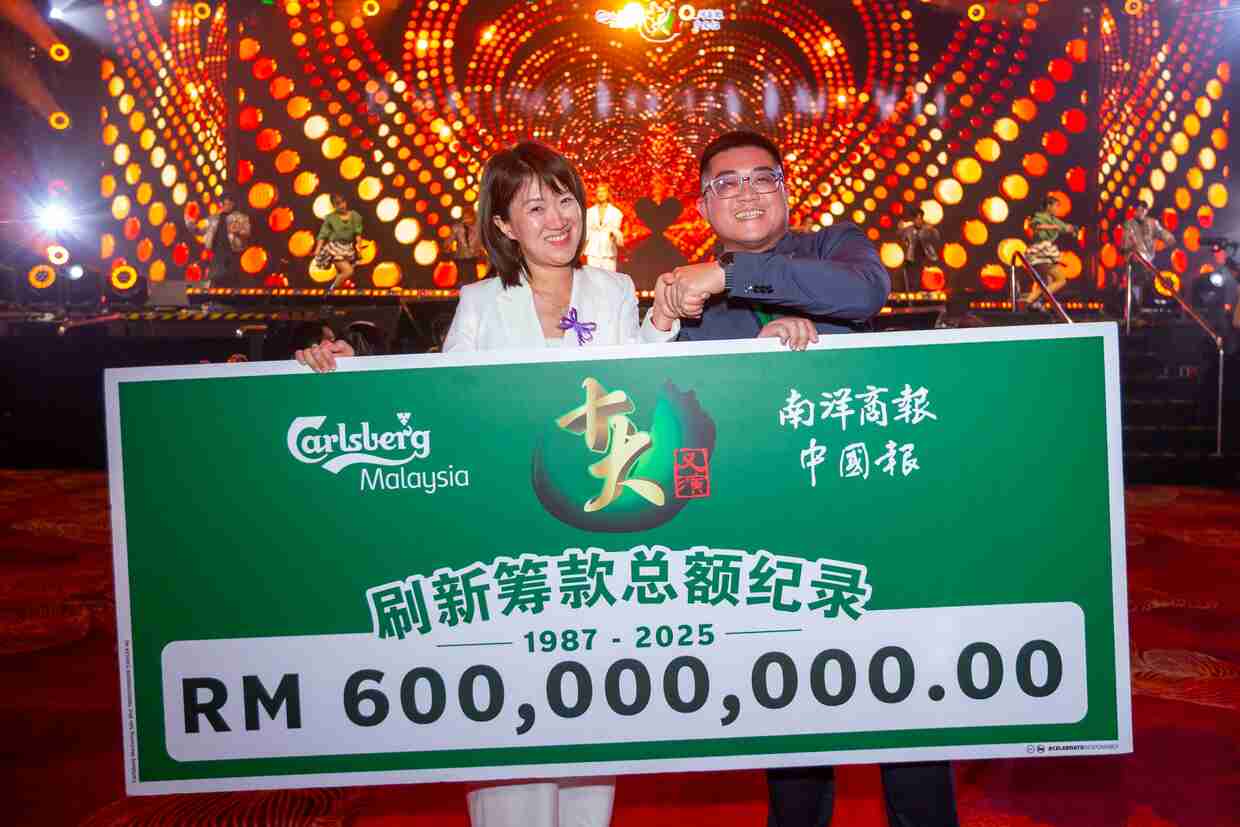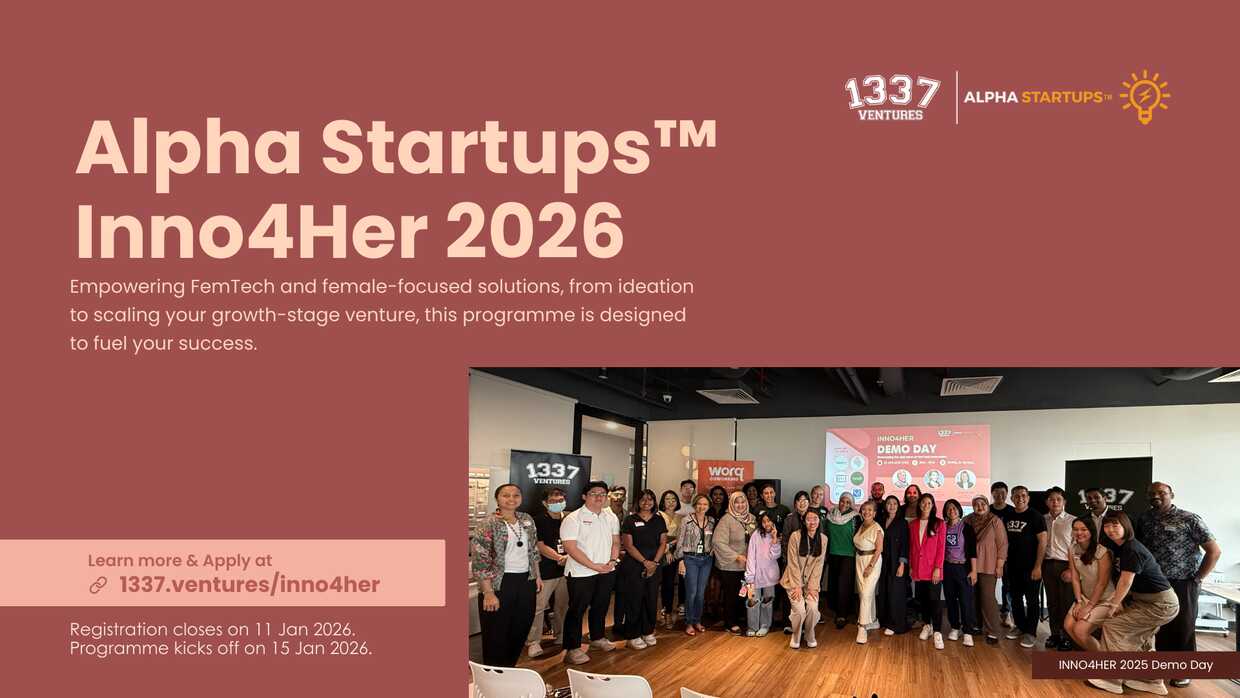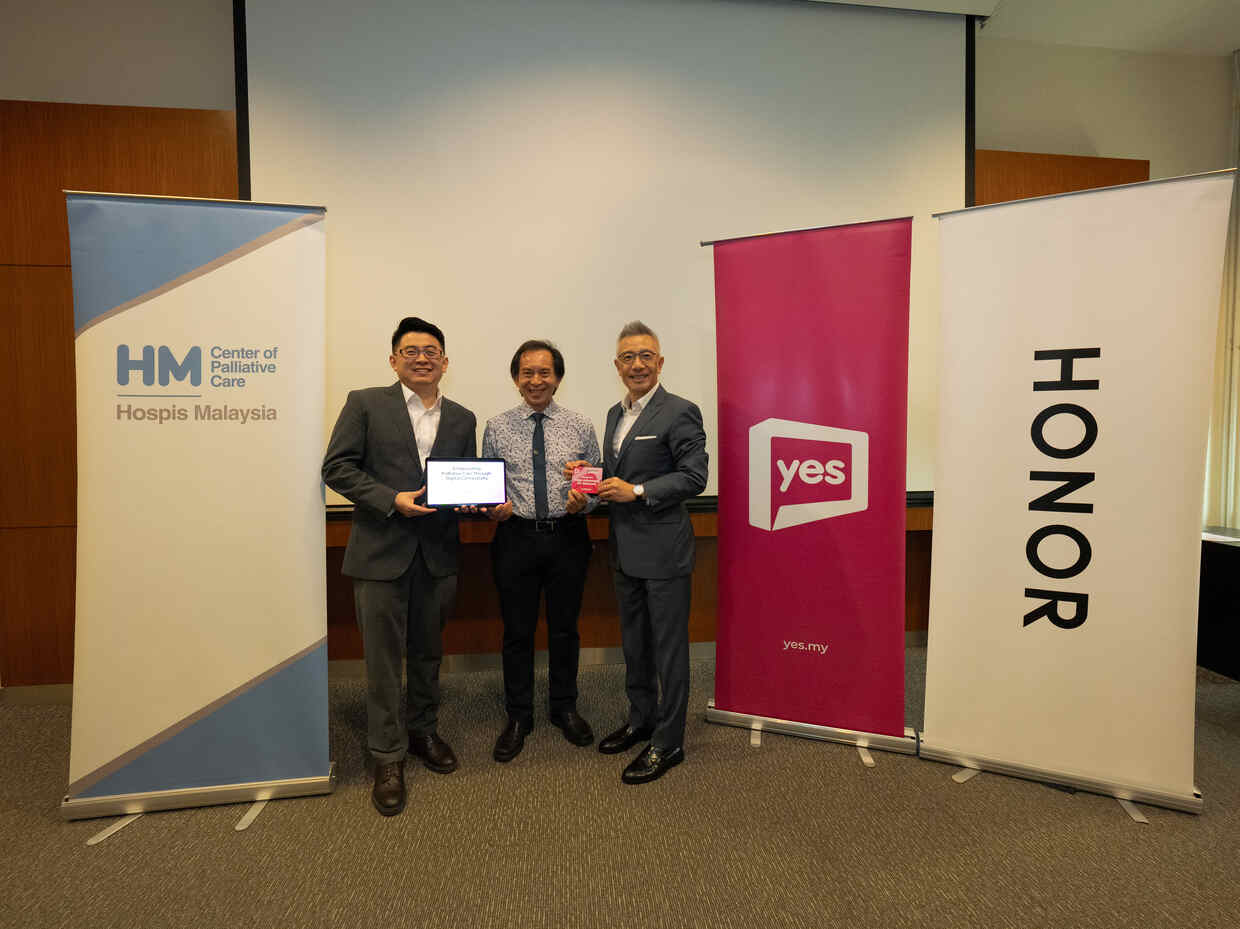George Town showcased its rich culture, tradition and heritage, when it celebrated its 5th anniversary of the inscription of the historic city of George Town as a UNESCO World Heritage Site, on 6 and 7 July 2013.
The first heritage celebration was in 2009, a year after it obtained the heritage status. Seeing the success of the celebration over the weekend, the state government decided to have it as an annual event.
Following this, the state government decided to support an annual month-long festival of arts and culture, and in 2010 the George Town Festival was born. The George Town Festival is held to precede the Heritage Celebration, which becomes a fitting finale to the festival.
The Heritage Celebration was presented and coordinated by George Town World Heritage Incorporated (GTWHI). GTWHI, which was established by the Penang State Government in April 2010, is the State Agency for Heritage.
The Heritage Celebration captured the vibrant and dynamic living heritage of George Town through its multi-cultural practices, traditional arts and craft and food. It takes place in and around the historic streets of George Town.
The celebration was divided into two parts – on 6 July, it showcase ‘Folk Tales Under the Stars’. This was where myths and legends come alive through songs, story-telling, dancing and guided tours.
There were events like Boria, Peranakan Hokkien Rhymes, Wayang Kulit, Teochew Rod Puppet Show and of course traditional arts and crafts and traditional food.
The night ended with the ever popular lion dance, performing simultaneously with the Giddha dancers and the beat of the Dhoi drum.
On 7 July, the celebration focused on ‘Community Celebrations’. The various communities in Penang were given a chance to show off their rich heritage.
The launching, by Penang’s CM, Lim Guan Eng, was held on this day, in front of the Teochew Association in Chulia Street. He was accompanied by state excos Chow Kon Yeow, Danny Law Heng Kiang and Jagdeep Singh Deo and other state assemblymen.
In Lim’s speech, he said that the heritage of George Town has now become well known to the world. This, he believe, will ignite the pride in Penangites, as well as Malaysians in general.
He then toured the heritage enclave and visited some old gallery shop, at the same time, stopping to watch some cultural performances along the way.
Yayasan Agama Islam Pulau Pinang and Persatuan Sejarah dan Warisan Melayu Pulau Pinang and Barisan Warisan Masjid Melayu Lebuh Acheh, presented a day-long experiences of their arts and culture, with delicious Malay traditional cakes, sepak takraw competition, nasyid performances, demonstrations of traditional games like congkat and gasing and many more.
The Indian Muslim were not forgotten as they had two events. One was the Music and Nasi Kandar Festival (presented by the Gabungan Liga Muslim Pulau Pinang), and the other was the Cultural and Heritage Celebration (presentd by the Kapitan Keling Mosque Committee & Indian Muslim Community Organisation Malaysia), in front of the well-known majestic Kapitan Keling mosque.
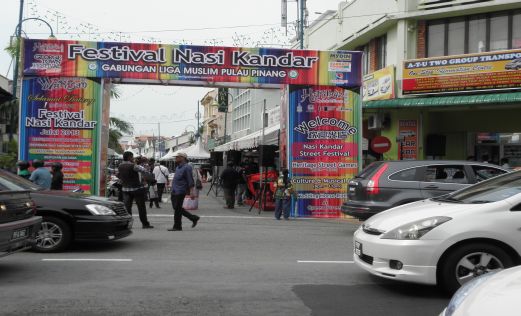
Queen Street
The entrance to the festival where tables and chairs are laid on the street for people to savour the different kind of nasi kandar and the centre of the street become the ‘stage’ for performances.
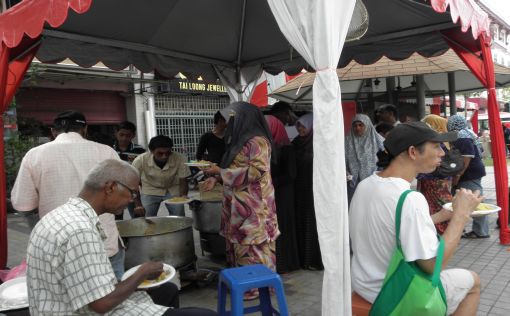
Kapitan Keling Street.
Free rice for all.
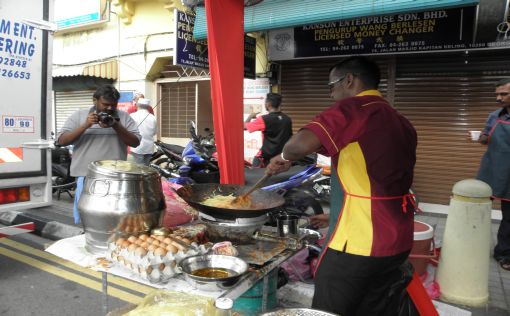
Kapitan Keling Street.
Free mee goreng for all.
It was also an open day for the mosque, when visitors are allowed to enter the mosque to admire it’s beautiful architecture.
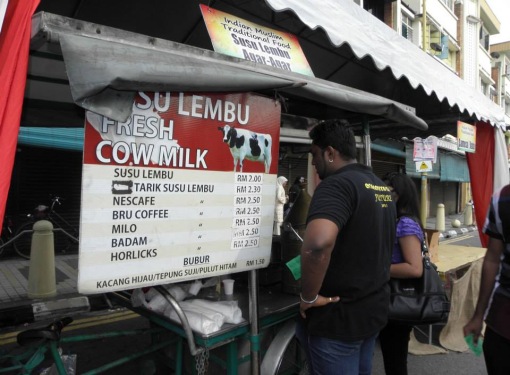
Kapitan Keling Street.
Fresh cow milk on sale.
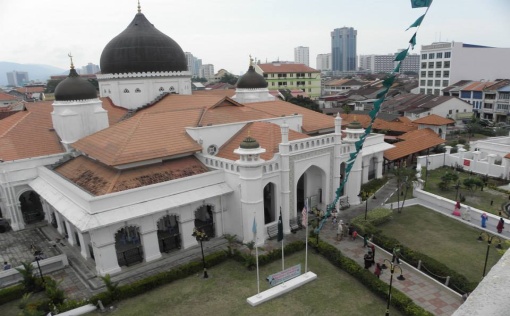
Kapitan Keling street.
The majestic Kapitan Keling mosque.

Kapitan Keling Street.
The traditional way of grinding chilly shown inside the Kapitan Keling mosque.
The Malaysian Indian Chamber of Commerce and Industry presented an unforgettable night of beautiful traditional music and classical dance.
Joining in the fun, was the Penang Teochew Association, showing off its food and cultural performance within the compound of their temple, Han Jiang Ancestral Temple, in Chulia Street.
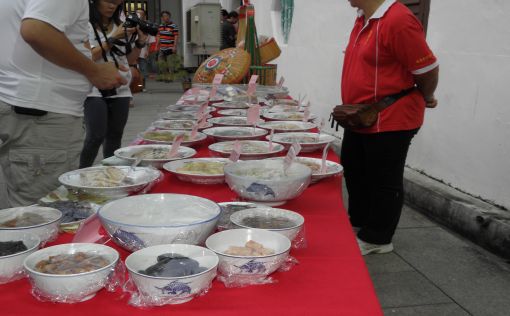
Chulia Street.
All the different kind of cuisine by the Teochew were on display.

Chulia Street.
Making of ‘chai kueh’ demonstration, of which the ‘kueh’ then went on sale immediately.
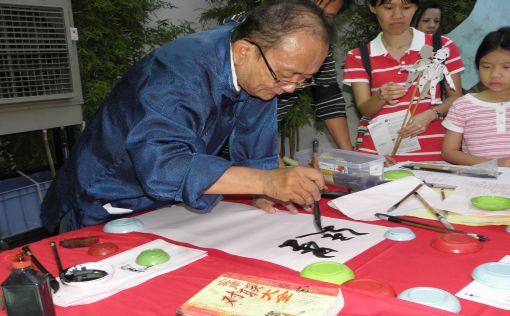
Chulia Street.
The art of calligraphy.
What would a celebration be without children?
The sprawling compound of the Khoo Kongsi was used as a ‘playground’ for children’s craft and games. Apart from playing traditional games like ‘bottle caps’, ‘walking on coconut husk’, ‘pick-up sticks’, the children learned to make silk screen prints and home-made toys like the ‘matchbox pistol’.
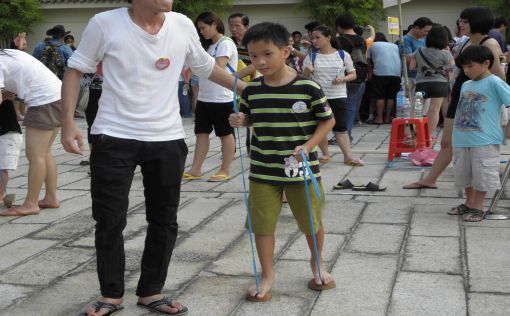
Canon Square.
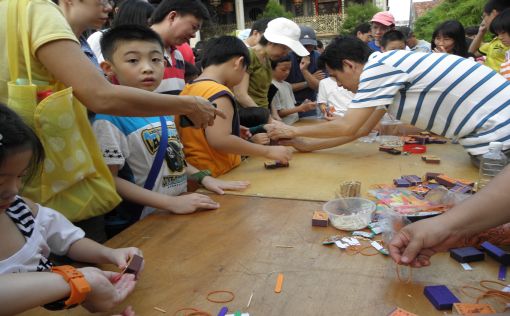
Canon Square.
Making of ‘match-box pistol’.
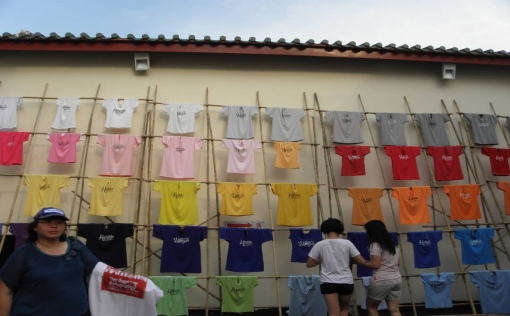
Canon Square.
This is how the people decades ago hung their clothes to dry.
While all these were going on, neaby, at nearby Armenian Street, saw a steady stream of people walking up and down, visiting the various shops and stalls along the street. Not forgetting, many were busy seen taking photographs of the famous ‘children on bicycle‘ mural by Lithuanian artist, Ernest Zacharevic. A stall with souvenirs (keychains, magnetic holder, notebooks, etc) of all the eight murals painted by Ernest was doing a roaring business, especially popular among the youth.

A shop selling sweets and titbits found during the 70s era, many found sold in schools during that time.

This stall is very popular with visitors, especially on a hot day walking around the heritage zone.
Shaved ice (ice kacang) and ‘Malayisa ice-cream’ (ice in tube form), popular during the 60’s and 70’s.
A little bit further away from the Armenian St/Khoo Kongsi area, is Rope Walk, where it comes alive during the later evening when the Penang Chinese Clan Council presented the ‘Meng Eng Soo Open Day – Path of Our Forebears’.
Visitors were taken a walk back in time to understand the local Chinese culture first-hand. There were exhibitions on the history of Meng Eng Soo (Ghee Hin Memorial Hall of Heroes), demonstrations of ancestor worship and traditional costumes and performances.
Traditional food were sold and prepared in the traditional way, complete with the people serving the food, dressed in traditional costumes.
All these efforts by the organizers, brought back a hint of nostalgia to the older generation and let the young people a chance to see how life was during the good old days.
George Town, Penang, indeed has a lot to offer in terms of its rich, diverse and vibrant culture and tradition and rightly deserved to be listed as UNESCO World Heritage Site.
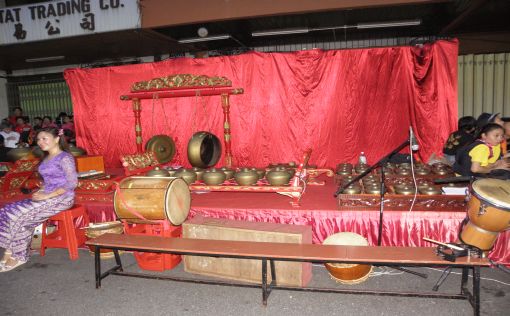
Rope Walk.
Traditional Chinese musical instruments.
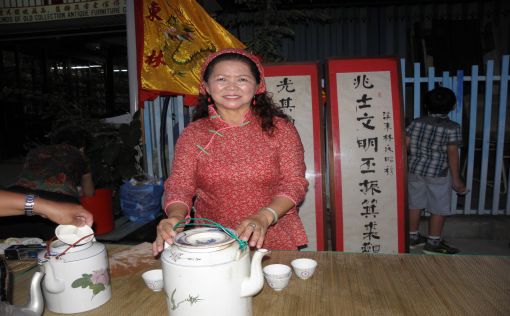
Rope Walk.
Free Chinese tea served by pretty lady dressed in traditonal costume.
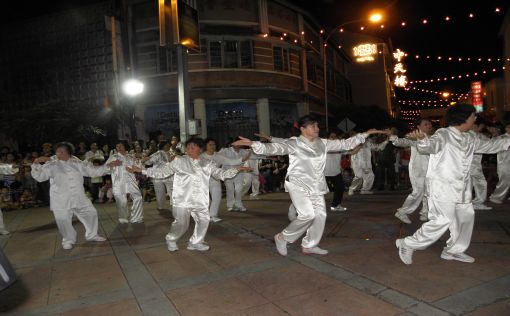
Rope Walk.

Rope Walk.
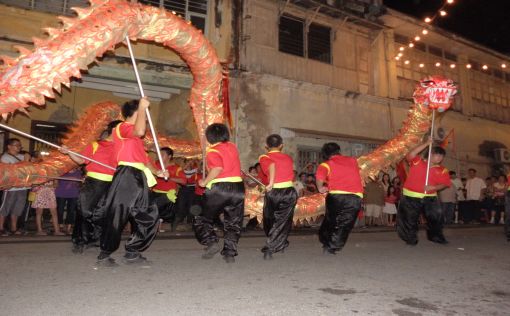
Rope Walk.
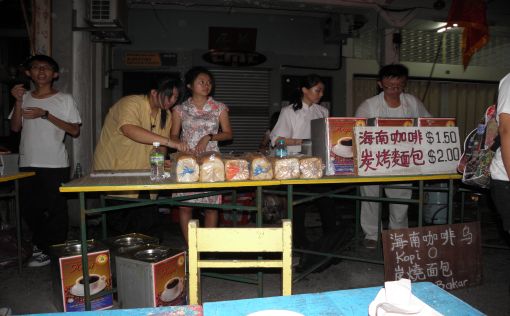
Rope Walk.
‘Kopi-o’ (black coffee) and toast for breakfast, prepared and served in the traditional way. Notice the small, low wooden table (partly hidden) and chair in the foreground.


